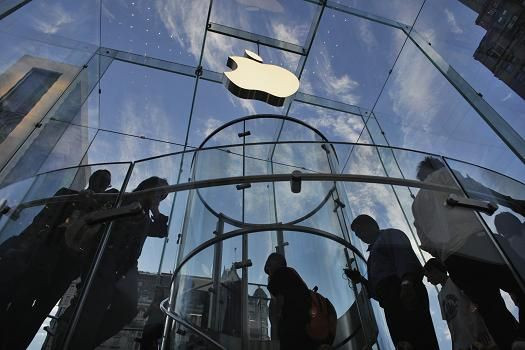Apple Switch? Renewed Speculation Of Snubbing Intel For ARM Chips

Apple (Nasdaq: AAPL), the world's most valuable technology company, has been selling the iPhone 5 with the new, A6 processor inside, since Sept. 21. The processor is more powerful than any of its predecessors.
That led to speculation a month ago that Apple might rely exclusively on the A6 and its successors from longtime partner ARM Holdings of the UK, severing a supply tie with Intel Corp. (Nasdaq: INTC), the world's top chipmaker.
Intel, of Santa Clara, Calif., has been the supplier of chips for Apple Macs and Macbook products, if not for its iPhones and iPad products.
Analysts agree that Apple's shift to independent design is inevitable. “We don't believe it will likely happen for a few years,” said Shaw Wu, of Sterne Agee.
Wu said continued strong demand for iPhone 5 and the iPad family, including the new iPad Mini, may convince Apple, of Cupertino, Calif., that it's strong enough to design its own products, even though it will never make its own chips.
At Piper Jaffray, analyst Gus Richard agreed the idea has legs. "There's a trend back to internally developed silicon away from merchant silicon," he said.
Shares of ARM Holdings, Apple and Intel all weren't much affected by the renewed speculation. But shares of ARM, now at $33.96, have gained nearly 18 percent in the past month since the speculation began. Apple shares, at $585.55, have fallen more than 10 percent, and Intel, at $21.70, has fallen more than 4 percent.
Last month, Apple CEO Tim Cook created a new internal unit, Techologies, and assigned Bob Mansfield, a senior VP and electrical engineer, to manage it. The move came after Senior VP Scott Forstall was fired for mistakes in shipping iPhone 5 without an adequate map system to replace Google (Nasdaq: GOOG) Maps.
Semiconductor expert Linley Gwennap has examined the new A6 chip and determined that Apple engineers have tweaked it.
Apparently, engineers at Apple designed their own central processing unit, or CPU, core, which is different from the cores of mobile chips developed by rivals such as Qualcomm Inc. (Nasdaq: QCOM) and Nvidia Corp. (Nasdaq: NVDA).
Indeed, Gwennap said in his “Microprocessor Report” that “recent information, however, indicates that it designed its own CPU rather than licensing” one from ARM Holdings. Earlier iPhones used the A5 chip from ARM.
Moreover, the chip expert said, “Initial analysis of shipping iPhone 5 units, however, indicates that A6 uses a unique ARM-compatible CPU design that has never been seen before.”
With cash and investments exceeding $117 billion last quarter, Apple has the resources to hire engineering talent. As well, the company acquired chip designers including private Intrinsity, a Texas-based specialist in ARM design, in 2010, for an undisclosed sum.
Apple paid $278 million in 2008 to acquire P.A. Semi, of Burlingame, Calif., a specialist in low-power ultra-fast microprocessors established by Dan Dobberpuhl, the designer of the 64-bit StrongARM processors for the former Digital Equipment Corp., the inventor of the minicomputer.
That team was assigned to work on speedy, low-power chips that could be deployed into the first iPhones, introduced in 2007, and iPads, which were introduced in 2010.
If Apple has now used its engineering prowess in the processor unit, it could make advances on its own, without relying exclusively on ARM’s technology. Still, all the chips are made by contractors such as Taiwan Semiconductor Manufacturing Co. (NYSE: TSM).
Meanwhile, Apple's biggest rival (as well as a main supplier), Samsung Electronics (Seoul: 005930) designs its own cores for its line of Galaxy phones and tablets. Then it manufactures them.
© Copyright IBTimes 2024. All rights reserved.






















